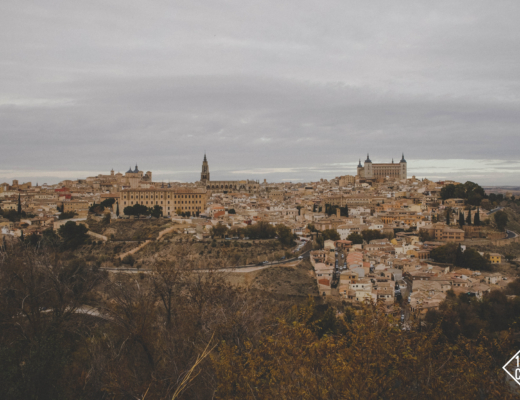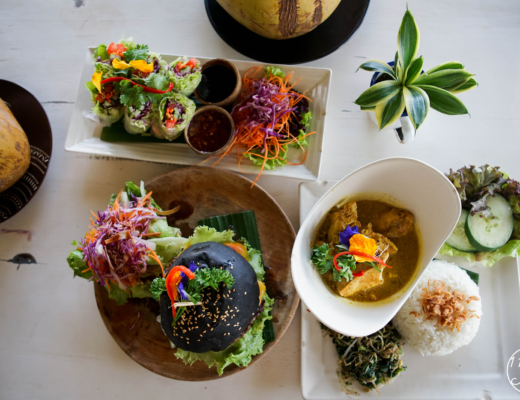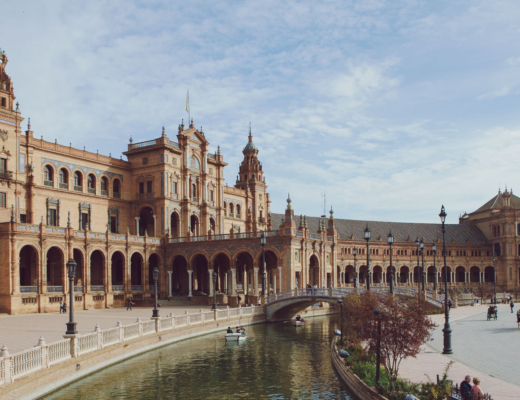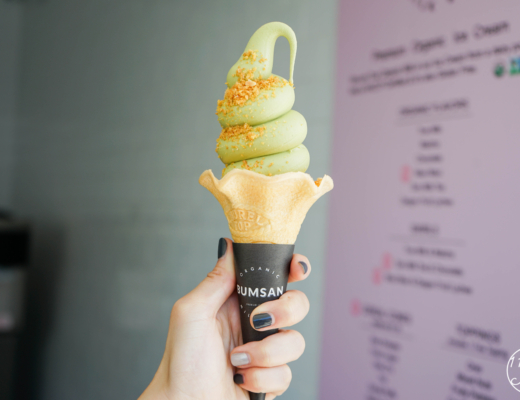
Little known fun fact about paella is that it is actually not the national food of Spain, but it is a Valencian specialty. I found out about this during a conversation with my Spanish coworker when I ignorantly told him I was going to Spain so that I can stuff myself with paella and sangria. Thankfully, Kenny and I were planning on spending some time in Valencia for a short stopover before going to Madrid. Knowing that a lot of the paella sold in Barcelona is probably a tourist trap, Kenny and I waited to have our first authentic paella experience in Valencia. By the third day of our trip, we were not accustomed to Spain’s meals hours and we kept on going to the paella restaurant at the wrong times. We first went at 6PM for dinner, but the restaurant opens at 8:30PM for dinner and it was way too late for us as I can feel my stomach rumbling from the lack of food so coming back tomorrow was the only final option. We came back the next day at noon for lunch, but the turns out the restaurant opens at 2:30PM. Since we had no other option as we were leaving the day after, we wandered around the area for two and a half hours and lo and behold third time’s the charm! Although Valencia is known for its paella, it definitely has more appeal than that. Our time in Valencia was filled with awe, mostly at the intricate architecture, clean sidewalks (yes, I am always in awe since I live in NYC), and Valencian orange trees everywhere. The city is really living up to its name. Per usual, I will go through in detail of what we did and please let us know if we missed anything!

HOW TO GET AROUND
I am infinitely grateful that I have a boyfriend who has a good sense of direction and is willing to navigate. We mostly walked everywhere, but I am sure there are alternative modes of transportation. We stayed at a photography boutique hotel at the city center (OneShot Hotels) which made the trip extremely convenient. It’s located in the city center and is within walking distance from the train station.

WHAT TO DO
City of the Arts and Sciences
City of the Arts and Sciences is a complex consisting of several structures designed by Santiago Calatrava and Félix Candela. The complex consisted of a planetarium (L’Hemisfèric), a science museum (El Museu de les Ciències Príncipe Felipe), an aquarium (L’Oceanogràfic), an opera house (El Palau de les Arts Reina Sofia), a concert hall (L’Àgora) and bridges (L’Umbracle and El Pont de l’Assut de l’Or ) We went there after the sun set and the museums were closed, but regardless, the complex was still very stunning. The architects were able to strike the perfect harmony of structured grids and fluid curvatures. The overarching design of the complex reminded me of the Oculus here in NYC, but on a grandiose level.





Valencia Central Market
Valencia Central Market (Mercado Central de Valencia) is the largest market in Valencia and even in Europe. The market is divided into two sections. Half of the market is a fish market, and the other half houses countless of vendors selling various items, including, spices, meat, Spanish desserts and wine! The market does not just offer an amazing place to shop (this was where I bought a mini paella pan for my foodie friend), it is also a great place to admire the architecture of this 90-year-old market.







Plaza de la Virgen
Plaza de la Virgen is a pedestrian mall located in the heart of Valencia. The mall is bounded by three buildings: Cathedral of Santa Maria, Basilica of Our Lady of the Forsaken and the President of the Generalitat office. The center of the mall is adorned by a fountain of Neptune, the god of the sea in ancient Rome mythology. On top of that, in the summer, the mall is a perfect place to enjoy some lovely outdoor dining.





Turia Gardens
Turia Gardens (Jardin del Turia) is a garden that stretches for nine kilometers in the center of Valencia. The garden is pretty much the Central Park of Valencia. It is the go-to place for locals and tourists to bike, run, or just enjoy a nice relaxing walk. It is hard to miss this garden as it links several of Valencia’s must-go-to places such as the City of the Arts and Sciences, Cabecera Park and the Serranos Gate.




Serranos and Quart Gates
Serranos and Quart Gates (Torres de Serranos, Torres de Quart), are gates that used to be part of a wall built in the 14th century that acted as a defense structure to protect Valencia. Although the wall does not exist anymore, the gates are preserved and had different functions throughout their life. At one point, the gate was a prison. The gates provide a nice and cheap way to enjoy Valencia with a bird’s eye view.








Jardin de las Hesperides
Although Jardin de las Hesperides (Hesperides Garden) is mostly known as the small passageway garden to the Botanical Garden, it is more than that. The garden is home to about 50 Greek mythology sculptures based on the story of the Hesperides. Hesperides were nymphs that guarded Hera’s golden apple tree. In addition to the sculptures, the garden is house to various citrus bearing trees.
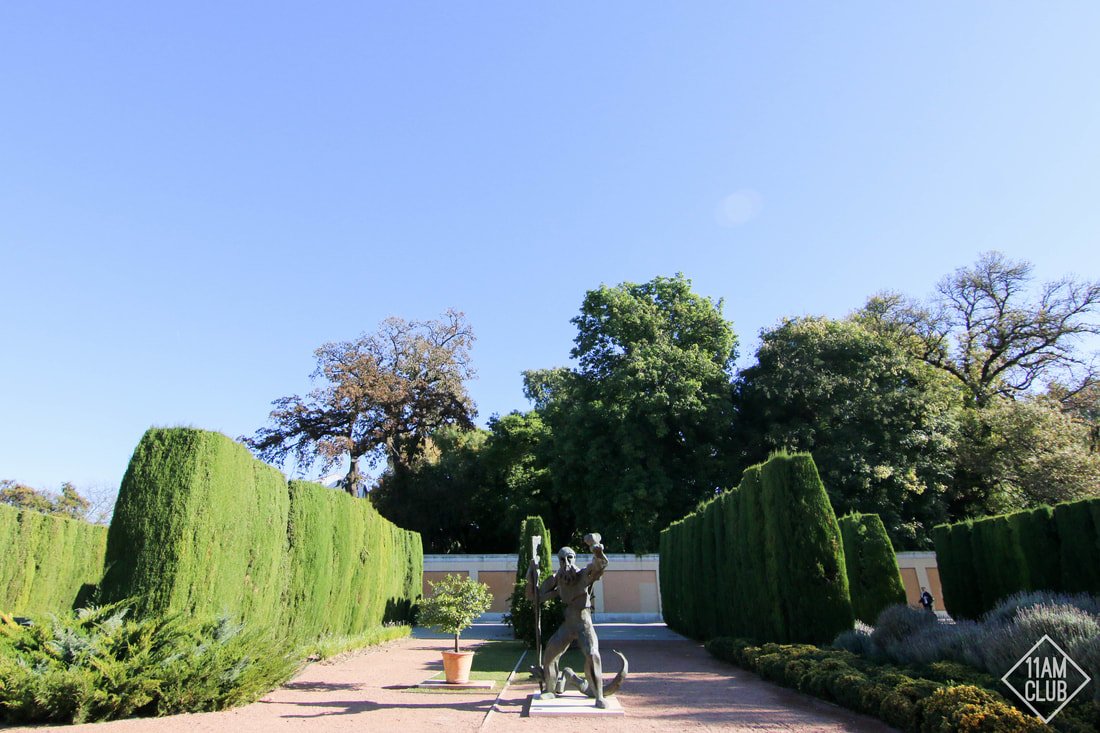




Restaurant Canela
I would love to try and recommend you more places to dine in at Valencia, but we were unfortunately only there for two days and out of the four meals we had, three were at McDonalds. However, as I have alluded in the introduction to this guide, Restaurant Canela was seriously worth the money we spent. A lot of Paella restaurants would charge you about 15 Euros per person, however at Canela, you only need to spend 11 Euros per person for a Valencian Paella. Not only that they serve amazing food, the servers are one of the nicest and most attentive servers we had during our time in Spain. They taught us how to eat Paella like a true Spanish. So here’s how to eat Paella 101:
1. Eat the paella straight from the pan!
2. Have plate on the side for seafood shells!
3. Enjoy your paella and possibly order a second serving!





